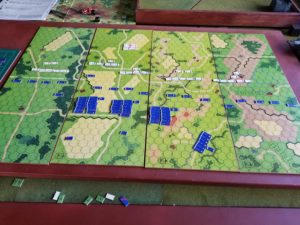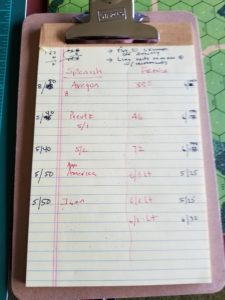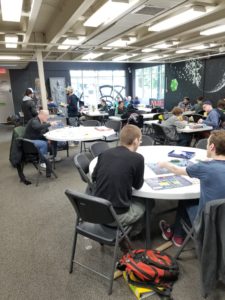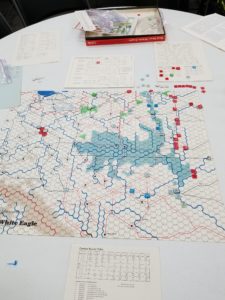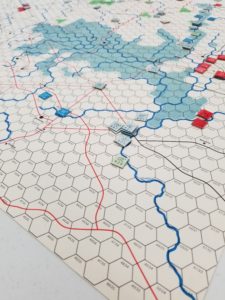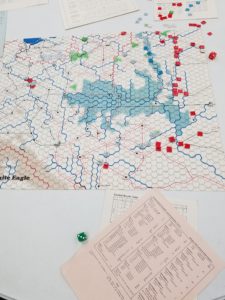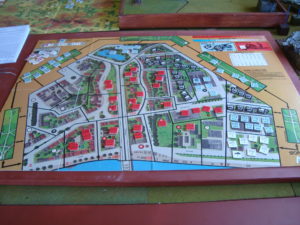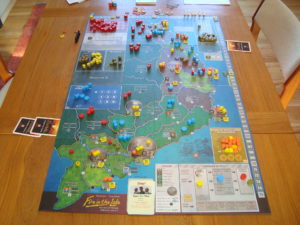Played Southern Front from the old GDW Third World War series last weekend at Tim’s.
Much lower counter density than Battle For Germany, and with very tough victory conditions for the Warsaw Pact.
Victory points are awarded for controlling cities and ports, and the Pact must control almost every city and port in Yugoslavia (if hostile), Greece and Turkey to score a decisive victory.
The NATO player is outmanned and outgunned, and must grimly hang on during a seemingly endless series of Pact high odds attacks.
While the game is only eight turns long, each turn is lengthy and involved.
Aircraft maintenance and missions assignment occurs before any movement takes place. Aircraft can fly deep strikes including logistical strikes (effecting supply status), runway cratering, or escort; interdiction missions resulting in additional movement costs and disruption for enemy units, as well as plain old ground attack and ground attack escort missions.
Movement and combat takes place in impulses. The turn sequence is Pact First Impulse (movement and combat), Pact Sub Impulse (units not in enemy ZOCs may move and attack, with regroup), a NATO Reserve Impulse (units not in enemy ZOCs may move and attack, units may also regroup), Pact Second Impulse (same as first with two sub-impulses) , and finally a NATO First and Second Impulse.
A key element in this game system is Proficiency Rating. Differences in ratings shift combat odds in the favor of the side with higher average proficiency. The regroup phase allows players to “rebuild” units, recovering one proficiency step if the unit has not done anything in the previous phase and is not in an enemy ZOC. Pact units can never be totally “rebuilt” and retain a one factor proficiency loss, regardless.
Yugoslavia is either neutral, an ally of NATO, or becomes a NATO ally during Turn 4. This determination by a chit pull.
A special rule in Southern Front precludes any NATO deep strikes, cratering or escort missions during the first turn. Also, the NATO initial ground dispositions are mandated. The result is that the first Pact impulses result in significant attrition of NATO Turkish forces, with the Greeks taking some hits, also. Not surprisingly, Turks and Greeks cannot cooperate or enter each other’s country.
In our game, Tim initially focused on Turkey, making an amphibious landing east of Istanbul, which is the bottleneck leading to Anatolia. Despite severe losses, the Turks held Istanbul and, with the arrival of reinforcement, destroyed the flanking Soviet Marines. Tim’s attempts were handicapped by some horrific die rolling during the maintenance phase of Turn 2, which temporarily gave NATO air superiority.
Beginning with Turn 3, Tim’s attention turned towards Yugoslavia (which had entered on Turn 1), and Greece. When the game ended at Turn 5, the Yugoslavs were in disarray, with Pact forces massing for an attack on Greece. However, Turkey was still controlled by NATO.
A good game. I’ll post up Tim’s comments later.
